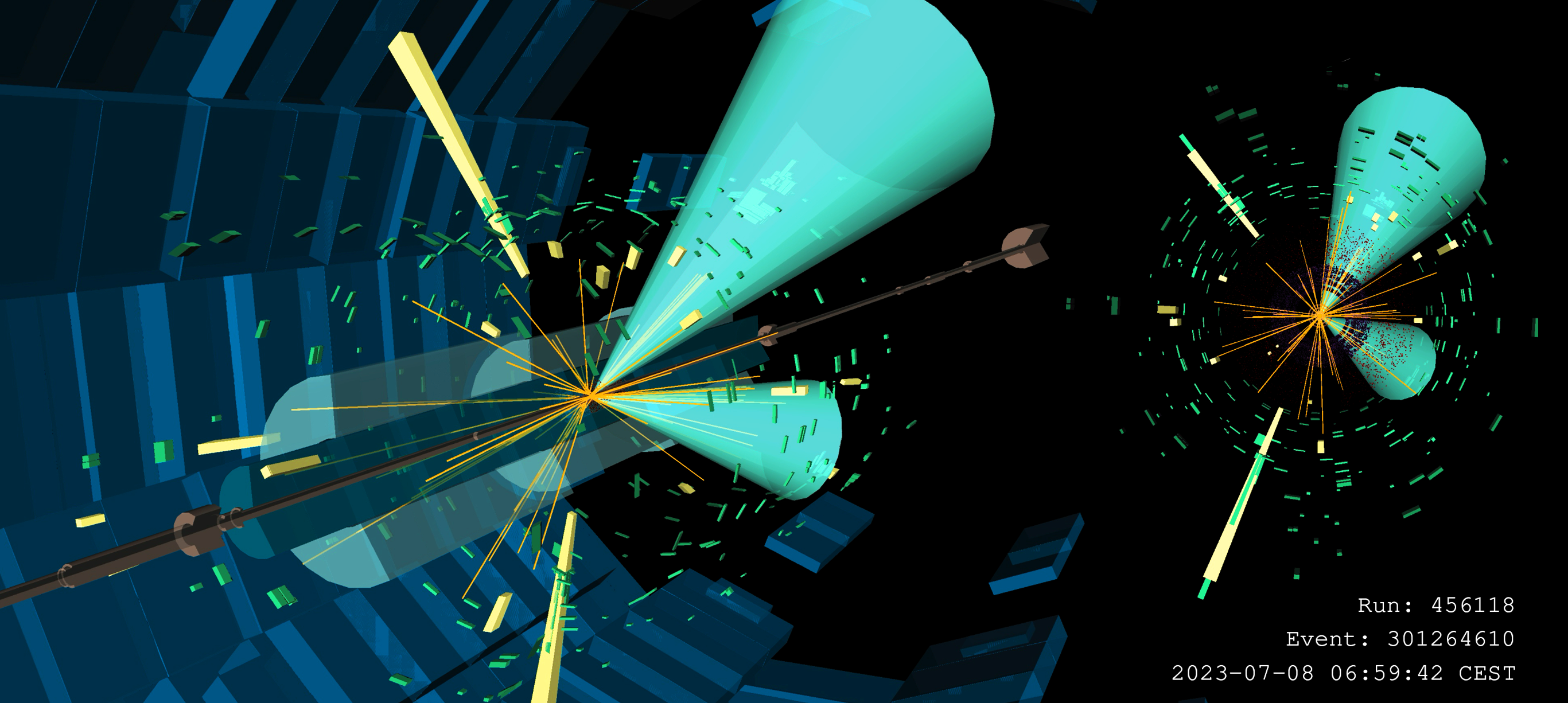ATLAS sets record limits on Higgs self-interaction using Run 3 data
22 May 2025 | By
One of the biggest open questions in particle physics today is how the Higgs boson interacts with itself. This “self-coupling” plays a pivotal role in determining the shape of the energy potential of the Higgs field, influencing both the early Universe evolution and the mechanism that gives mass to elementary particles. Physicists at the ATLAS Collaboration are shedding light on this fundamental interaction by searching for the rare pair production of Higgs bosons.
In a newly released result, the ATLAS Collaboration studied one of the “golden” decay channels of the Higgs pairs: HH → bbγγ, where one Higgs boson decays into two photons and the other into a pair of b-quarks. By combining the entire LHC Run 2 (2015–2018) and early Run 3 (2022–2024) dataset, physicists have significantly enhanced the statistical power of the analysis. This result marks the first ATLAS measurement based on over 300 fb⁻¹ of proton–proton collision data, reaching an expected sensitivity comparable to that of the full Run 2 combination across all Higgs boson pair production channels.
Searches in this channel can be particularly challenging due the extremely rare nature of Higgs pair production – predicted to occur once in a trillion proton-proton collisions – and the significant background from Standard Model processes that mimic the bbγγ signature. To overcome these challenges, ATLAS physicists used advanced multivariate techniques, including machine learning classifiers and precise b-jet and photon identification techniques. The team also developed an optimized event selection strategy to fully benefit from improved detector calibration and event reconstruction methods developed in both Run 2 and 3.
This new result is the first ATLAS measurement based on over 300 fb⁻¹ of proton–proton collision data, combining the full LHC Run 2 (2015–2018) and current Run 3 (2022–2024) datasets.

As a result of these advancements and the expanded dataset, physicists measured the signal strength defined as the observed signal normalized to its Standard Model prediction, by μHH= 0.9 +1.4-1.1 where μHH= 1.0 +1.3-1.0 was expected. The expected (observed) upper limit on the signal strength is 2.6 (3.8) times the Standard Model – nearly a 100% improvement over the previous best expected limit achieved by the ATLAS Collaboration in this same channel (Figure 1a). The observed statistical significance of the Standard Model signal is 0.84σ, with an expected significance close to 1σ (Figure 1b), indicating no significant excess but full consistency with Standard Model expectations (Figure 2).
The analysis also places constraints on two key parameters: the magnitude of the Higgs boson self-coupling normalised to its Standard Model prediction (κλ) (Figure 3a), limited to be between −1.6 and 6.6 at 95% confidence level, and the coupling modifier of two Higgs bosons and two vector bosons normalised to its Standard Model prediction (κ2V) (Figure 3b), limited to between −0.5 and 2.6 at 95% confidence level. This level of sensitivity was achieved through the combination of a larger dataset, a more performant analysis strategy, and the dedicated efforts of experts across the ATLAS Collaboration, who rapidly analysed new data while implementing major updates to algorithms and analysis strategies.

This result underscores the ATLAS Collaboration’s growing ability to explore Higgs-boson-pair production in the bbγγ channel. The significant boost in sensitivity also lays the foundation for future measurements of the Higgs self-coupling – a key to understanding the shape of the Higgs potential and the evolution of the Universe after the Big Bang. With the full Run 3 dataset soon available and High-Luminosity LHC on the horizon, ATLAS is well positioned to push these studies even further – sharpening our understanding of the Higgs boson and exploring potential signs of physics beyond the Standard Model.
Learn more
- Study of Higgs boson pair production in the HH→bbγγ final state with 308 fb−1 of data collected at 13 TeV and 13.6 TeV by the ATLAS experiment (ATLAS-CONF-2025-005)
- Studies of new Higgs boson interactions through nonresonant HH production in the bbγγ final state in proton–proton collisions at 13 TeV with the ATLAS detector (JHEP 01 (2024) 066, arXiv:2310.12301, see figures)
- Shedding light on Higgs-boson self-interactions, ATLAS Physics Briefing, 21 September 2023






